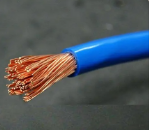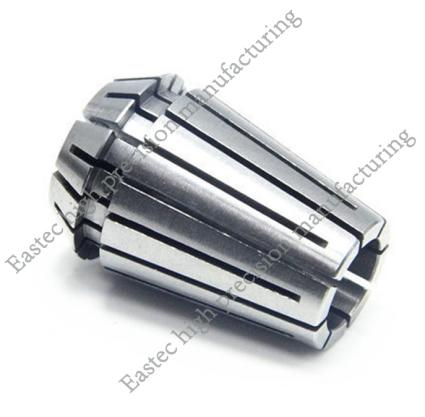
Why do steel parts need quenching and tempering? What effects can it achieve? Let's find out through this article today.
Quenching and tempering treatment: The heat treatment method of high - temperature tempering after quenching is called quenching and tempering treatment. High - temperature tempering refers to tempering between 500°C and 650°C. Quenching and tempering can greatly adjust the performance and material properties of steel. It has good strength, plasticity, and toughness, and excellent comprehensive mechanical properties.
After quenching and tempering treatment, tempered sorbite is obtained. Tempered sorbite is formed during the tempering of martensite. It can only be distinguished under an optical metallographic microscope at a magnification of 500 - 600 times or more. It is a composite structure in which carbide (including cementite) spheroids are distributed in a ferrite matrix. It is also a kind of tempered structure of martensite, a mixture of ferrite and granular carbides. At this time, the ferrite has basically no carbon supersaturation, and the carbides are stable - type carbides. It is an equilibrium structure at room temperature. There are two major categories of quenched and tempered steels: carbon quenched and tempered steels and alloy quenched and tempered steels. Whether it is carbon steel or alloy steel, the carbon content is strictly controlled. If the carbon content is too high, although the strength of the workpiece after quenching and tempering is high, the toughness is insufficient. If the carbon content is too low, the toughness is improved but the strength is insufficient. To obtain good comprehensive properties for quenched and tempered parts, the carbon content is generally controlled between 0.30% and 0.50%. During quenching for quenching and tempering, the entire cross - section of the workpiece is required to be fully quenched, so that the workpiece obtains a microstructure mainly composed of fine - acicular quenched martensite. Through high - temperature tempering, a microstructure mainly composed of uniform tempered sorbite is obtained. Small factories cannot conduct metallographic analysis for each furnace. Generally, only hardness testing is carried out. That is to say, the hardness after quenching must reach the quenching hardness of the material, and the hardness after tempering is checked according to the requirements of the drawing.
Case sharing
Quenching and tempering of 45 steel
45 steel is a medium - carbon structural steel with good hot and cold working performance, good mechanical properties, low price, and wide availability, so it is widely used. Its biggest weakness is its low hardenability. Workpieces with large cross - sectional dimensions and high requirements are not suitable for using 45 steel. The quenching temperature of 45 steel is A3+(30 - 50)°C. In actual operation, the upper limit is generally taken. A relatively high quenching temperature can accelerate the heating speed of the workpiece, reduce surface oxidation, and improve work efficiency. To homogenize the austenite of the workpiece, sufficient holding time is required. If the actual furnace loading is large, the holding time needs to be appropriately extended. Otherwise, the phenomenon of insufficient hardness due to uneven heating may occur. However, if the holding time is too long, there will also be problems such as coarse grains and serious oxidation and decarburization, which will affect the quenching quality. We believe that if the furnace loading is greater than the specified amount in the process document, the heating and holding time needs to be extended by 1/5. Because 45 steel has low hardenability, a 10% salt - water solution with a high cooling rate should be used. After the workpiece enters the water, it should be fully quenched but not completely cooled. If the workpiece is completely cooled in the salt water, it may crack. This is because when the workpiece is cooled to about 180°C, the austenite rapidly transforms into martensite, resulting in excessive structural stress. Therefore, when the quenched workpiece is quickly cooled to this temperature range, a slow - cooling method should be adopted. Since it is difficult to control the water - outlet temperature, it must be operated based on experience. When the shaking of the workpiece in the water stops, it can be taken out of the water for air cooling (oil cooling is better if possible). In addition, the workpiece should move in the water rather than remain stationary. It should move regularly according to its geometric shape. A stationary cooling medium and a stationary workpiece will lead to uneven hardness and stress, causing large deformation or even cracking of the workpiece. The hardness of 45 steel quenched and tempered parts after quenching should reach HRC56 - 59. For workpieces with a large cross - section, the hardness may be lower, but it should not be lower than HRC48. Otherwise, it means that the workpiece has not been fully quenched, and sorbite or even ferrite structures may appear in the structure. This structure will still remain in the matrix after tempering, failing to achieve the purpose of quenching and tempering. The high - temperature tempering temperature after quenching of 45 steel is usually 560°C - 600°C, and the hardness requirement is HRC22 - 34. Since the purpose of quenching and tempering is to obtain comprehensive mechanical properties, the hardness range is relatively wide. However, if the drawing has hardness requirements, the tempering temperature should be adjusted according to the drawing requirements to ensure the hardness. For example, some shaft - type parts require high strength, so the hardness requirement is high; while some gears and shaft - type parts with keyways need to be milled or broached after quenching and tempering, so the hardness requirement is lower. Regarding the tempering holding time, it depends on the hardness requirement and the size of the workpiece. We believe that the hardness after tempering depends on the tempering temperature and has little relation to the tempering time, but it must be fully tempered. Generally, the tempering holding time of workpieces is always more than one hour.





 Customer service 1
Customer service 1  Customer service 2
Customer service 2